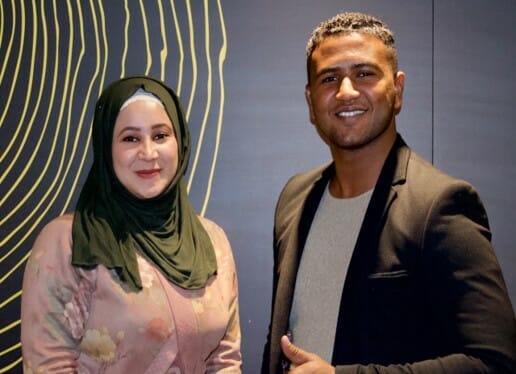News > Blog
Youth in Jordan Work Toward a Brighter Future For Young Students
Published 03/20/2020 by Global Communities

Laith Eshebat (26) and Balqis Eshebat (23) are a dynamic brother and sister duo from Ghor Al-Safi, a community located near the shores of the Dead Sea and marked by limited opportunities and a stretched education system. Laith describes a situation of overcrowded classrooms and parents, often uneducated themselves, unable to provide their children with the extra at-home academic support they need to succeed. Balqis, a teacher in the community, says when students don’t grasp the schoolwork, the entire community is impacted by students’ increased absenteeism, dropouts, and vulnerability to negative influences. Laith and Balqis personally experienced the challenges of the system growing up.
Laith became a USAID YouthPower participant in 2018; he was motivated to join by the unique youth-led approach of the program and is now a trained facilitator. Laith was already an active volunteer in his community but explained most projects focused on short-term solutions rather than root causes. When community mapping highlighted the systemic education challenges and a gap in afterschool support, Laith and his peers determined they wanted to make a change so their community’s next generation could succeed in school. The team designed an initiative to provide afterschool English and Arabic lessons to students age 10-12. They met with parents, local leaders, and the principal to finalize their plans, and secured a venue and teachers, including Balqis.
“During asset mapping, we found a common theme in our upbringings…and decided we want the next generation to know how to read and write.”
Balqis used her teaching experience to assess the greatest gaps in student learning and design a corresponding curriculum for the afterschool program. She also created a pre- and post-evaluation to measure the program’s success. Afterschool classes were held daily over four weeks for forty students. The classes had a 100 percent attendance rate, and students showed an average 40 percent improvement in performance. Families noticed a positive change in their children, and the team has been overwhelmed by the demand from additional families for more programming. Teachers have also seen the difference in their classrooms, but recognize that this is only the beginning for true success to occur.
Moving forward, the team plans to use an in-kind grant from USAID YouthPower to provide laptops for computer lessons and expand the program to more students. They are also designing a system to collect minimum fees for the program to cover the cost of school supplies and sustain the program beyond YouthPower. Laith and Balqis express their hope that the program will inspire others to give a bit of their time to support children’s educations.





